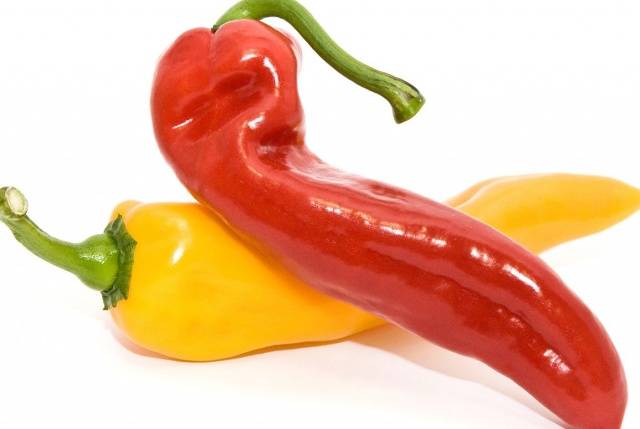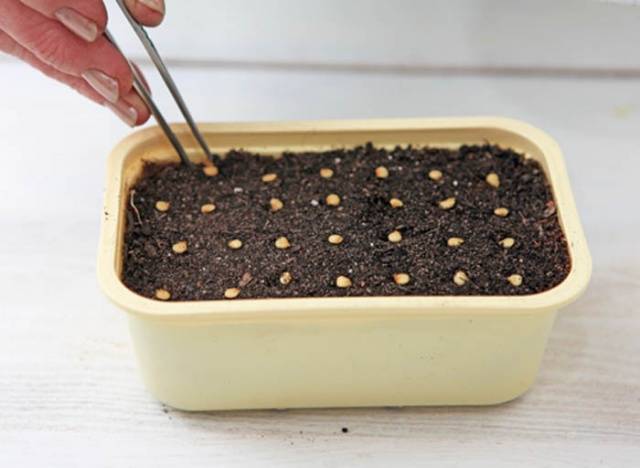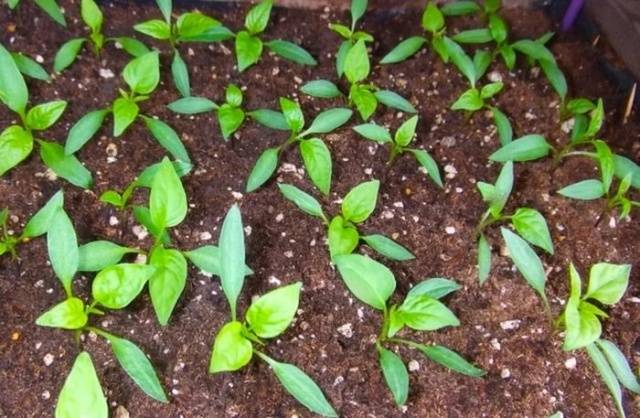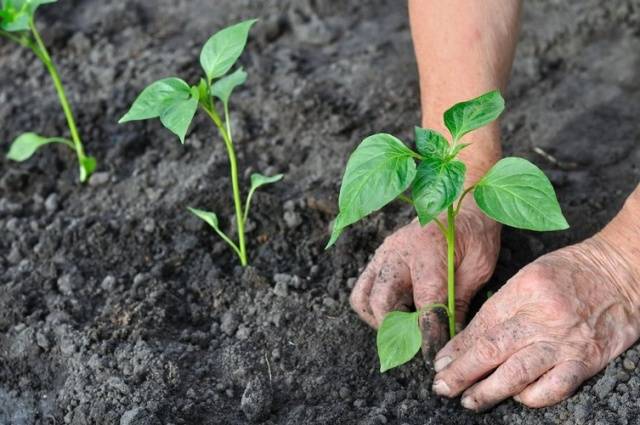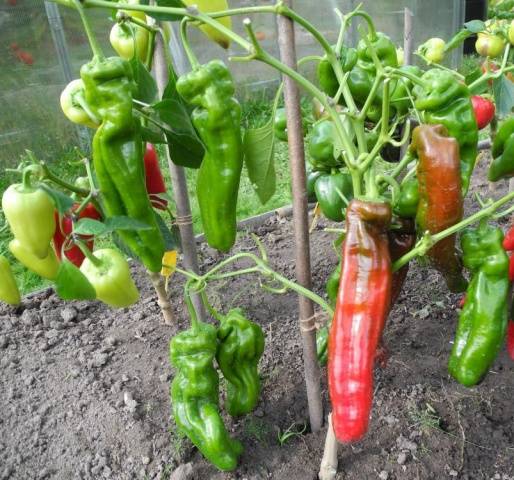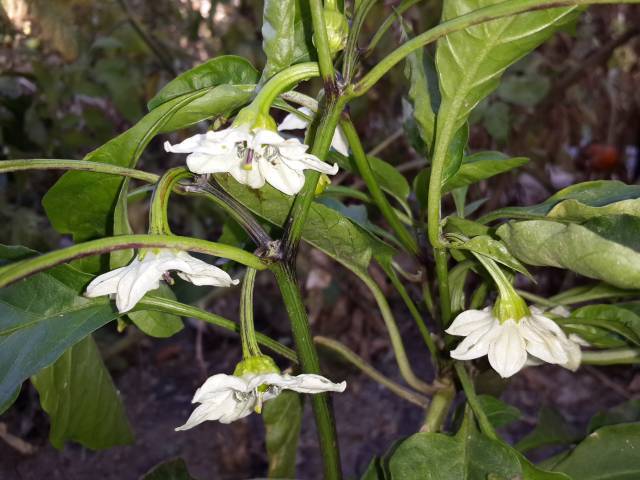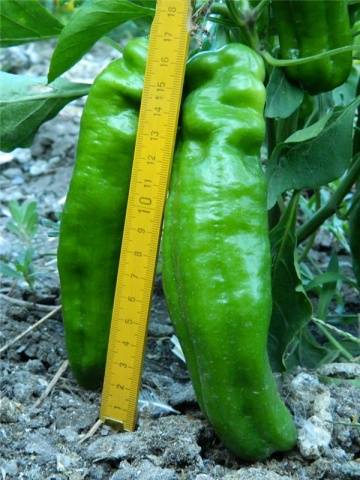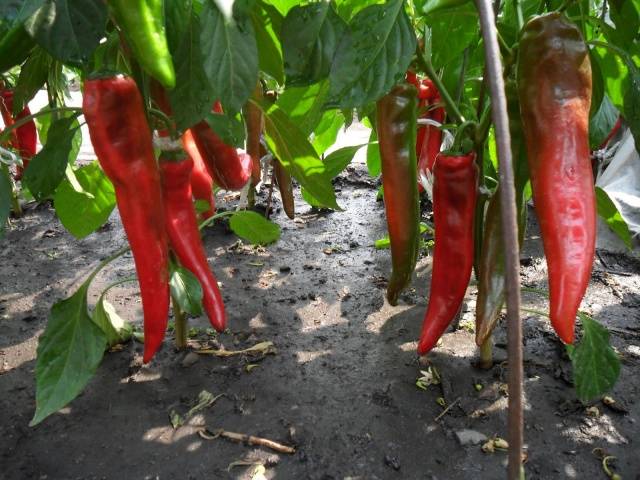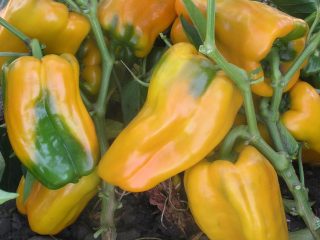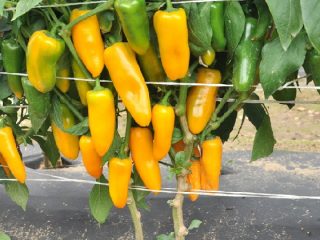Content
Pepper Ramiro was bred in Italy, but it is grown not only in Europe, but also in Latin America. There are several varieties with red, yellow and green fruits. Most of the seeds are sold from Dutch companies.
Ramiro peppers are sold by supermarkets and grocery stores. Buyers first have a question whether Ramiro pepper is sweet or not. The elongated shape of the fruit resembles a Chilean pepper. However, the variety has excellent taste and is suitable for growing in Russian conditions.
Description of the variety
Characteristics of the Ramiro variety:
- bush height up to 90 cm;
- the crop is harvested 130 days after seed germination;
- 10-12 fruits are formed on the bush;
- high productivity;
- average ripening period.
Ramiro fruits have a number of characteristics:
- length 25 cm;
- wall thickness 5 mm;
- elongated shape;
- weight from 90 to 150 g;
- red, green or yellow;
- sweet taste.
Ramiro red peppers are planted in open areas, in greenhouses and greenhouses. In terms of taste, the variety is considered sweeter than regular bell peppers.
The Ramiro variety is rich in vitamin C, which remains in the fruit for 3 months after harvest. The product contains vitamins of group B, H, PP, beta-carotene, trace elements, fiber. Taking pepper normalizes the intestines, removes toxins.
Getting seedlings
It is advisable to grow Ramiro pepper using the seedling method. Planting seeds directly into the ground is possible only in the southern regions, where the soil and ground quickly warm up in spring. In areas with a cool climate, the culture is planted at home. After germination, they are transferred to open areas or under a film.
Preparing for landing
The Ramiro variety is planted in prepared soil. It is obtained by combining humus, sand and garden soil in a 2: 1: 1 ratio. A tablespoon of wood ash containing a complex of minerals is added as fertilizer.
Before planting, the soil is steamed in a microwave or oven. It is allowed to use peat cups or purchased land intended for planting vegetables.
Ramiro seeds are purchased from gardening stores. According to gardeners, seeds from peppers bought in grocery stores germinate well.
The use of Epin's solution or another growth stimulant will help to improve the germination of Ramiro seeds. Seed material is dipped in a solution for 4-5 hours, after which it is washed in clean water and planted in the ground.
The Ramiro variety is planted in boxes or separate containers filled with prepared soil. Seedlings are deepened by 2 cm and watered abundantly. The containers must be covered with glass or foil, after which they are removed to a dark place.
Germination of seeds of the Ramiro variety occurs at temperatures above 20 degrees. When shoots arise, the containers are rearranged to a lighted place. This process usually takes several days.
Seedling conditions
Seedlings of Ramiro peppers provide certain conditions:
- daytime temperature - up to 26 degrees;
- night temperature - from 10 to 15 degrees;
- constant ventilation;
- moderate soil moisture;
- backlighting for 12 hours.
Ramiro peppers are poured with warm, settled water.Excess moisture leads to the spread of fungal diseases, which are detrimental to seedlings. Cold water is not used because it is stressful to the plants.
In the room where the red Ramiro pepper is located, high air humidity is created. The plantings are periodically sprayed with warm water.
If the pepper is grown in a common container, then when 2 leaves appear in the seedlings, it is dived into separate containers. Plants recover for a long time after transplanting, so it is recommended to plant the seeds immediately in separate cups.
2 weeks before planting, the Ramiro variety is transferred to the balcony. This is how plants gradually adapt to natural conditions. First, the seedlings are kept in the fresh air for a couple of hours, then this period is increased.
Planting peppers
The Ramiro variety is planted in open areas, in film or glass greenhouses. The soil for planting begins to be prepared in the fall. You need to dig it up and add compost.
The culture prefers light soils with low acidity. For planting, they select places where zucchini, cucumbers, peppers, carrots, pumpkins, and onions grew a year earlier. Re-planting after peppers, as well as after tomatoes, eggplants and potatoes is not performed.
In the spring, 1 sq. m of soil add 30 g of ammonium nitrate. Nitrogen stimulates the development of green mass, which is necessary at the beginning of the growing season. After flowering plants, nitrogen fertilization is not used.
The procedure for planting the Ramiro variety:
- In the soil, holes are made 15 cm deep. Plants are placed in increments of 0.4 m. Spaces of 0.5 m are made between the rows. Peppers should be planted in a checkerboard pattern to facilitate further care and prevent planting from thickening.
- Seedlings, together with an earthen clod, are lowered into the holes.
- The roots are covered with soil, which is compacted a little.
- Sprinkle the peppers with plenty of warm water.
- To maintain soil moisture, mulching with peat or compost is performed.
After transplanting, the peppers are not watered or fed for 7-10 days. Plants take time to take root.
Care scheme
The Ramiro variety is looked after by watering and fertilizing. The bush is formed for a good harvest.
Watering the peppers
Ramiro sweet peppers are watered in the morning or evening hours, when there is no direct exposure to the sun. You need to use warm water that has had time to settle in barrels.
The intensity of watering directly depends on the stage of culture development:
- before bud formation - every week;
- when forming the ovary - twice a week;
- during fruit ripening - weekly.
The moisture rate for peppers is 6 liters per 1 sq. m landings. After watering, the soil is carefully loosened so as not to damage the roots of the plants. So peppers absorb moisture and minerals better.
Fertilization
The Ramiro variety gives a good harvest with regular feeding. Fertilizers are applied at the root as solutions.
After planting the peppers, the first feeding is carried out only after 2 weeks. To do this, take cow dung diluted with water in a ratio of 1:15. When using poultry droppings, dilute it 1:10.
To attract pollinators, add 0.1 kg of sugar to the spray solution. Processing is carried out in the morning or evening, when there is no sun.
The next feeding is carried out after flowering. For the Ramiro variety, a solution is prepared containing 20 g of superphosphate and potassium salt per 10 liters of water. These trace elements strengthen the root system of the peppers and improve the taste of the fruit.
Phosphorus and potassium are reintroduced after the first harvest. Fertilizers will extend the fruiting period of vegetables.
Bush formation
Correct shaping of Ramiro peppers ensures their high yields. As a result, thickening is eliminated, which contributes to the development of diseases and pests.
At the seedling stage, when it reaches a height of 20 cm, the plant forms branches. The first inflorescence appears in the place where the branches are formed. It is removed to allow the further development of the pepper.
The second stage of bush formation is carried out when the 10th leaf appears in the Ramiro variety. Excess branches are cut off and 2-3 shoots are left. Weak branches should also be removed.
Rationing of the ovaries will allow you to get large fruits. Excess ovaries are torn off manually.
Protection against diseases and pests
Subject to agricultural technology, the Ramiro variety is not susceptible to diseases. If high humidity occurs, and the temperature remains low, this creates conditions for the spread of fungal diseases.
To combat the disease, Barrier or Zaslon drugs are used. These are fungicides that can be used prophylactically. The preparations contain nutrients that strengthen the immune system of peppers.
In case of serious lesions, Ramiro peppers are treated with copper-based products (Oxyhom, copper oxychloride, Bordeaux liquid). They are used at least 3 weeks before harvesting.
Peppers attract aphids, wireworms, spider mites, and slugs. Insecticides are used against pests. From folk methods, infusions on garlic, onion peels, and wood ash are considered effective.
Gardeners reviews
Conclusion
Ramiro peppers are grown in open areas or placed under a film shelter. The variety is known for its sweet taste and health benefits. The fruits have a universal purpose, suitable for home canning and daily diet.
Plantings are regularly watered and fed. A good harvest is ensured by forming a bush and cutting off excess shoots.
